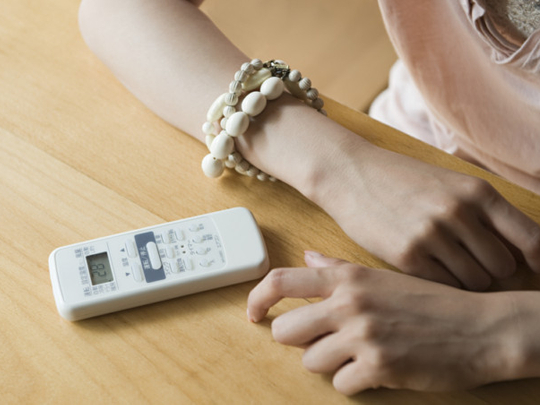
It is difficult to win an argument in most parts of the world if you declare a luxury item such as an air conditioner (AC) a necessity. However, searing heat for at least seven months a year and insane levels of humidity for three of those months will make you win the same argument in the UAE.
The extreme weather makes the UAE a happy hunting ground for air-conditioning manufacturers, distributors and retailers. No wonder so many of the global air-conditioning giants have a direct or indirect presence in the UAE.
Harsh summers and the swelling population of the expatriate workforce, lured by the nation’s strong economy, have traditionally sustained higher sales of air-conditioning equipment here. However, the air-conditioning sector, like many other economical sectors, encountered choppy waters when the 2008 financial crisis forced businesses to cut costs and retrench employees.
The economic turmoil bit hard into the purchasing power of those who remained. The booming real estate market crashed and construction activity slowed considerably — a big hit for the air-conditioning sector as revenue from the heating, ventilating and air conditioning (HVAC) segment of the business dried up.
However, all of that is past. The economy is bouncing back and population figures are now on the rise. According to the latest available data from Dubai Statistics Centre, the population in the emirate alone rose by 5 per cent in 2012 to reach 2.1 million inhabitants. It is a below-the-average 7 per cent population increase that the emirate has witnessed pre-crisis, but it is a healthy rise nonetheless.
Role of property market
Retailers are happy to see the surging population and strong hints of economic revival. “The improved economic conditions have played a positive role in the growth of our business. With increased incomes, spending power is increasing dramatically,” says Neelesh Bhatnagar, Chief Executive of retail chain, Emax.
The recovery of the property market and delivery of new residential stocks are also helping sales for retailers such as Emax. “More and more people are now buying homes rather than renting and bigger apartments are definitely on an upward trend,” says Bhatnagar.
Globally the air-conditioning systems market is projected to reach $178.4 billion (Dh654.72 billion) in 2018 from $98.2 billion in 2012, according to a recent study prepared by US-based market intelligence company, Transparency Market Research.
Within the UAE, Bhatnagar believes consumers have a lot to choose from as selling air-conditioning equipment is no longer a seasonal affair but a year-round business with massive potential for growth.
Top executives at Panasonic and Samsung, two of the world’s leading air-conditioning system developers and equipment manufacturers, agree with Bhatnagar.
Eco-friendly products
Hidekazu Tachibana, Director of Appliances Product Department, Panasonic Marketing Middle East and Africa, says the market here is constantly growing across all business verticals including the air-conditioning sector. Tachibana believes the room air-conditioning segment in particular is poised for rapid growth, going forward, and could clock 10-12 per cent overall growth in the UAE this year.
Samsung has also seen a steady consumer uptake across its air-conditioning product line-up, particularly, for household air conditioners, notes Robin Kadyan, General Manager of Home Appliance division at Samsung Gulf Electronics.
Both Samsung and Panasonic are experiencing increasing popularity in their wall-mounted split air-conditioning product lines among consumers, who prefer them over window air-conditioning units.
In response to studies that indicate that lighting and air conditioning account for 65-70 per cent of electricity consumption, Samsung has been investing in more sustainable and eco-friendly AC units. Samsung is now showcasing its cutting-edge smart air-conditioning range in the UAE. Products in this range contribute to reducing power consumption by up to 35 per cent, says Kadyan
Panasonic is also alive to new trends in the market and has a product range of tropical inverter room air conditioners, which the company considers ideal for tackling the region’s alarming rate of electricity consumption. Its latest line-up of products has been able to reduce power consumption by up to 30 per cent without compromising on user comfort.
Big challenges
The challenge for giants such as Samsung and Panasonic are to come up with more eco-friendly solutions as customers are not happy with hazardous agents such as hydrochlorofluorocarbon (HCFC) refrigerants driving their air-cooling systems.
“Consumers in the region are becoming more environmentally friendly and more inclined to buy home appliances with eco-features. The main problem with HCFCs is that they are not energy-efficient, which is part of the reason they are becoming obsolete,” says Kadyan.
Bhatnagar agrees, but points out that the higher-income customers do prefer quieter and cleaner technologies. However, there still exists a class of consumers driven by prices rather than the merits of technology.
The picture looks rosy for technologically superior air-conditioning equipment, but Samsung predicts that bigger growth will come from commercial AC units, the fortunes of which are linked to the revival of the construction sector not just in the UAE but across the region.
“Samsung has witnessed that the HVAC industry has evolved beyond standard air-conditioning units for households into more sustainable commercial systems,” says Kadyan.
A number of building projects that were suspended indefinitely during recession are beginning to take off again, which is leading to growth of commercial air conditioner offerings by brands such as Samsung.
There’s more profit to be harvested in the HVAC segment as the construction sector in the UAE is poised for further growth over the next four years, according to the UAE Construction Industry Outlook 2016 report by research organisation RNCOS. The size of the sector at the end of 2012 was estimated at $39.4 billion and is expected to grow at a compound rate of 9.5 per cent a year until 2016, says the report. ■












